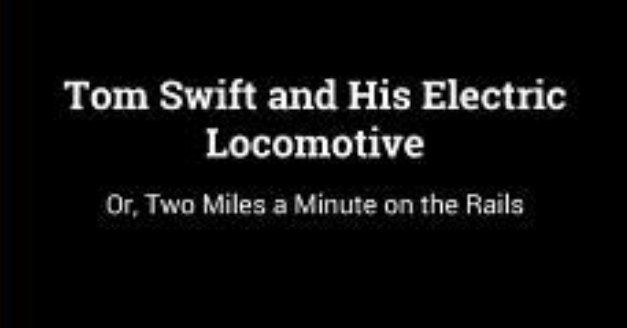CHAPTER VI — Tom Swift and His Electric Locomotive
byCHAPTER VI – Tom Swift and His Electric Locomotive opens with an atmosphere of tension balanced by humor and domestic commotion. Tom Swift awakens to the aftermath of a peculiar and potentially dangerous night. Despite the presence of a mysterious intruder, no confrontation occurs, thanks largely to Koku, Tom’s towering and loyal bodyguard who had stood vigilant. Koku’s efforts to protect Tom culminate in an accidental scuffle that sends Rad, the family’s other loyal servant, hurtling through a window—his dramatic nature providing a contrast to Koku’s straightforward brawn. Both men, although vastly different in demeanor, share a deep devotion to Tom, which creates a comic yet warm rivalry as they compete to be his most reliable aide.
The comedic mishap between Koku and Rad serves a deeper narrative purpose. It illustrates how Tom’s circle—though unconventional—is built on trust and shared purpose. Even in moments of levity, the sense of looming threat remains. Tom, although unfazed outwardly, is aware of the hostile forces closing in, hinted at through Koku’s overnight vigilance and Tom’s quiet resolution in the morning. These small character-driven scenes highlight the human elements that ground Tom’s otherwise extraordinary world. While technology and invention fuel his adventures, it’s the loyalty and character of his inner circle that keep his world cohesive.
After breakfast, Tom and his father make their way to the Swift Construction Company. Their destination is a meeting with Mr. Richard Bartholomew, a businessman desperate to electrify a key section of his railroad. The route, cutting through the challenging Pas Alos Range, presents both a technical and financial challenge that few would dare attempt. Yet, Mr. Bartholomew turns to Tom, recognizing that only someone of Tom’s reputation and inventive genius could provide a viable solution. The gravity of the meeting is quickly apparent, not just in the technical nature of the job but also in the surrounding threats—commercial rivals and possible sabotage.
This business proposition reflects the era’s industrial drive. Railroads were not only a mode of transportation—they were lifelines of commerce and symbols of progress. Electrification promised to enhance efficiency, reduce operational costs, and usher in a new chapter for rail-based travel. Mr. Bartholomew’s willingness to trust Tom, despite opposition from unknown forces, adds a layer of urgency. The young inventor isn’t just being hired; he is being relied upon to revolutionize a fundamental part of the American economy. Their discussion results in the signing of a critical contract—an act that formalizes not only their business arrangement but also Tom’s role in a broader technological revolution.
Throughout the conversation, undertones of danger continue to surface. Tom is no stranger to industrial espionage, and the hints about spies emphasize the risks of innovation in a competitive world. The threats don’t discourage Tom, though. Instead, they fuel his determination. As always, he balances technical acumen with strategic thinking. He understands that invention, especially one capable of changing how railroads operate, will inevitably attract enemies. The contract isn’t just paperwork—it’s a commitment to overcome both mechanical and human challenges.
Tom’s ability to stay composed under such pressure further solidifies his character. He’s not merely a boy genius tinkering in a lab; he’s becoming a leader in the national industrial landscape. The narrative makes it clear that Tom’s contribution is crucial not just to Mr. Bartholomew, but potentially to broader technological adoption across industries. Despite his youth, Tom is respected by seasoned businessmen and feared by less ethical competitors. His inventions are powerful not just because of their function, but because of their ability to shift balance in business and innovation.
What makes this chapter particularly compelling is the interplay between everyday humor and high-stakes ambition. The reader is drawn from a comic window-crashing scene to boardroom negotiations that could shape the future. It’s a reminder that even within narratives driven by technology, human relationships, trust, and personal values remain central. Tom’s world is dangerous, yes—but also full of heart. As the contract is signed, a new journey begins—one where electrical innovation could either be a triumph or a target. Readers are left eager to see how Tom will maneuver through both invention and intrigue in the chapters to come.

